Cornish pasties are savory pastry turnovers filled to the brim with hearty chunks of beef and tender vegetables! The flaky golden-brown crust absorbs all the delicious flavors from the meat filling within as they bake in the oven. After just one bite, you'll understand why these handheld meat pies are so popular!
French fries are always tasty with pasties; try sweet and sour red cabbage or German potato salad.
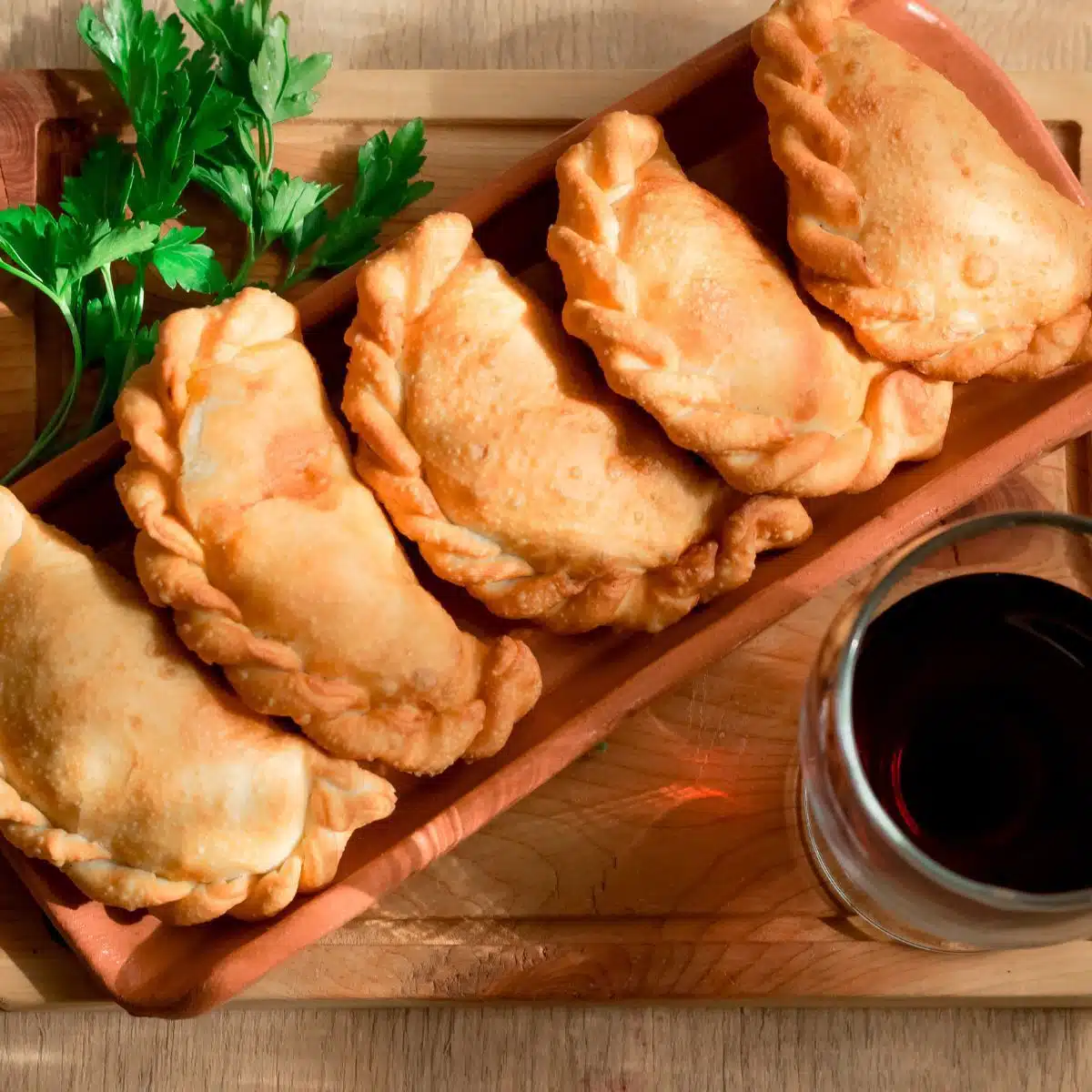
Jump to:
Pasties are traditional British comfort food with a rich culinary history dating back to the 1200s (maybe even longer)!
Anything can be stuffed into a pastry shell and called a pasty, but Cornish pasties are very particular and require a specific blend of ingredients to give them their signature rich flavor.
They are made by enveloping a simple yet delicious beef and vegetable filling inside a flaky homemade shortcrust pastry. If you haven't tried these savory handheld meat pies before, you're in for a real treat!
❓ What Are Cornish Pasties
Cornish pasties are savory baked pastry turnovers typically associated with Southern England (specifically Cornwall).
Cornish pasties were awarded a PDO (Protected Designation of Origin) and PDI (Protected Geographical Indication) in 2011, which means to be called 'Cornish pasties', the pasties must meet the specific requirements listed below.
- The pasties must be produced in Cornwall.
- The sealed edge of the pasties must be hand-crimped in traditional Cornish fashion.
- All ingredients must go into the pasty raw before being baked in the oven.
- The pasties must only contain beef, rutabaga, potato, onion, and salt & pepper. Any other ingredients or seasonings will disqualify them.
🌎 Origin
The exact origin of Cornish pasties, and pasties in general, is unknown. Records of these handheld pies date back to the 1200s and likely even before that!
During the 17th century, mining became a prominent source of income for families in Cornwall, and pasties were sent with the men of the family as a filling and convenient hand-held lunch. They would keep them in their pocket until lunchtime and enjoy them at room temperature.
Typically, the miner's initials were carved into the pasty so steam could escape while baking (and so no one swapped lunches).
The cornish style of crimping the sealed edges was also intentional; the excess crust gave the miners something to hold on to as they ate to keep them from contaminating the meal with their dirty hands.
Back then, the mines were widely considered home to ghosts (called 'knockers'), so miners would leave their extra crust to appease the spirits!
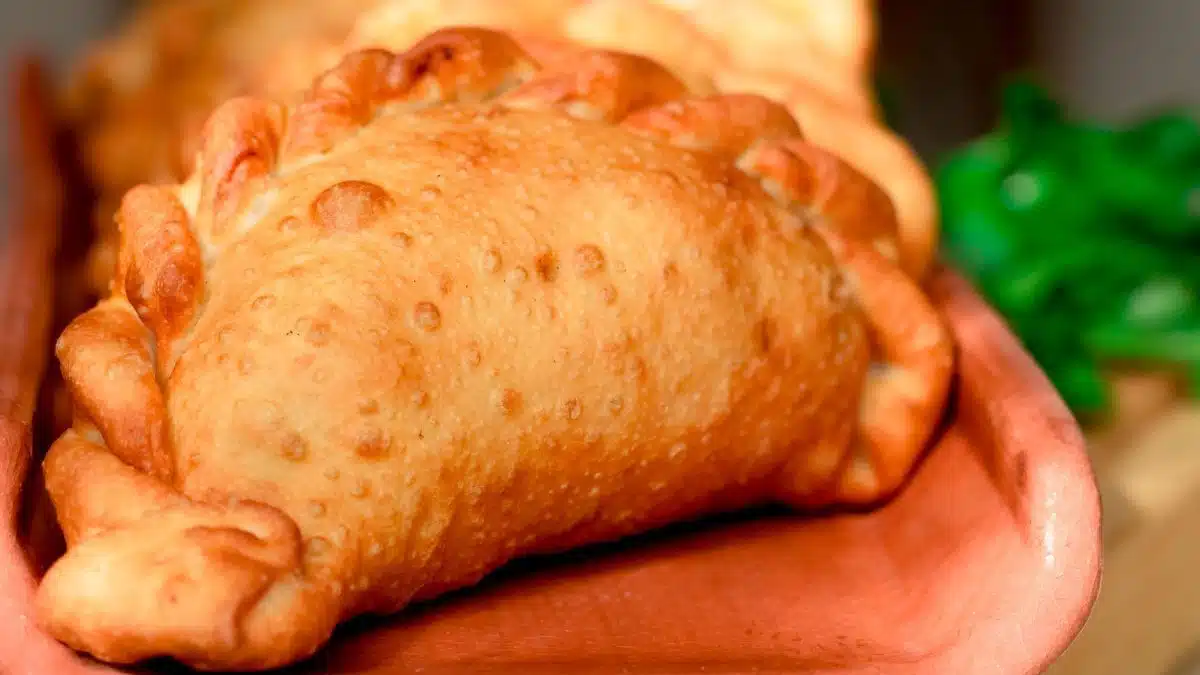
🥘 Ingredients
You'll need a few ingredients, but it's nothing you can't quickly grab at the grocery store. If you don't have skirt steak or sirloin steak available, ribeye steak will also work well!
Pastry
- All-Purpose Flour - 3 ½ cups of all-purpose flour (plus more for rolling out the dough).
- Baking Powder - 2 teaspoons of baking powder.
- Salt - 1 teaspoon of salt.
- Unsalted Butter - ½ cup of cold, unsalted butter (cut into small cubes).
- Egg Yolks - 2 large egg yolks (save one of the egg whites for your egg wash).
- Water - ½ cup of cold water.
- Egg White - 1 egg white (beaten for brushing onto the assembled pasties).
Filling
- Potatoes - 1 pound of potatoes (peeled and finely diced).
- Rutabaga - ⅓ pound rutabaga (peeled and finely diced).
- Onion - ⅓ pound of yellow onion (finely diced).
- Skirt Steak - 1 pound of skirt steak (or sirloin steak, uncooked and cut into small cubes).
- Salt & Pepper - 1 teaspoon each of salt & pepper.
*Be sure to see the free printable recipe card below for ingredients, exact amounts & instructions with tips!*
🍽️ Equipment Needed To Make Cornish Pasties
To make true Cornish pasties, you will need to utilize a few tools. Don't worry, there's nothing too fancy. In fact, you probably have everything in your kitchen already!
To make the pastry dough, you will need measuring utensils, a food processor (or blender), plastic wrap, and a rolling pin.
To make the filling, you will need a sharp knife and cutting board, a mixing bowl, and a silicone spatula.
For assembling your pasties, you will need 1 large or 2 medium baking sheets and a basting brush for the egg wash.
🔪 How To Make Cornish Pasties
There are a few steps to making authentic Cornish pasties, but there's nothing too difficult if you take it step-by-step! Just trust the process, and you'll be indulging in some incredible pasties in no time!
This recipe makes enough dough for 6 large pasties. You may have some extra filling, which is very tasty when pan-fried and can be added to soups, breakfast hashes, and more!
Make The Pastry Dough
- Blend dry ingredients. Add 3½ cups of flour, 2 teaspoons of baking powder, and 1 teaspoon of salt to a food processor or blender and quickly blend to combine. Add ½ a cup of butter and blend just until the mixture begins to look like coarse breadcrumbs.
- Add egg and water. Add 2 large egg yolks and pulse a few times to combine. Then, add the water in small amounts (you might not need the full ½ cup), and pulse the food processor between each addition until the dough begins to form a ball.
- Chill. Remove the pastry dough from your food processor and wrap it tightly in plastic wrap. Place it in the fridge to chill for 3 hours.
Roll Out The Dough
- Preheat. When it's almost time to pull the dough from the fridge, preheat your oven to 350°F (175°C). Pull out 2 large baking sheets and sprinkle flour over them, set aside.
- Portion the dough. Grab your dough from the fridge and flour a flat surface to roll it on. Shape the ball of dough into a log and slice it into 6 evenly-sized pieces.
- Roll the dough. Roll each chunk of dough into a round shape that is roughly 8 inches in diameter (you can use an 8-inch dinner plate as a guide if needed) and set aside.
Make The Pasties
- Mix filling ingredients. In a large mixing bowl, add 1 pound of diced potatoes, ⅓ pound of diced rutabaga, ⅓ pound of diced onion, 1 pound of uncooked diced skirt steak (or sirloin), and 1 teaspoon each of salt & pepper. Mix until everything is thoroughly combined.
- Fill the pasties. Lay out a circle of dough on your floured work surface and add a heaping handful of the filling mix to the center. You want to leave a ¾-inch space around the edges of the dough.
- Seal the pasties. Wet your fingers and lightly moisten the edges of the dough. Fold the bottom half of the dough upwards to meet the opposite edge. Use your fingers to crimp the dough closed, starting in the center and working outwards.
- Score the dough. Repeat with the remaining pasties and place them onto the prepared baking sheets. Use a sharp knife to slice a small slit on the top of each pasty so steam can escape.
- Egg wash. Brush the pasties with 1 beaten egg white and place them in the oven to bake for 40-50 minutes or until nicely golden brown.
- Cool and serve. Remove from the oven and let cool for 5-10 minutes before eating because the inside will be very hot!
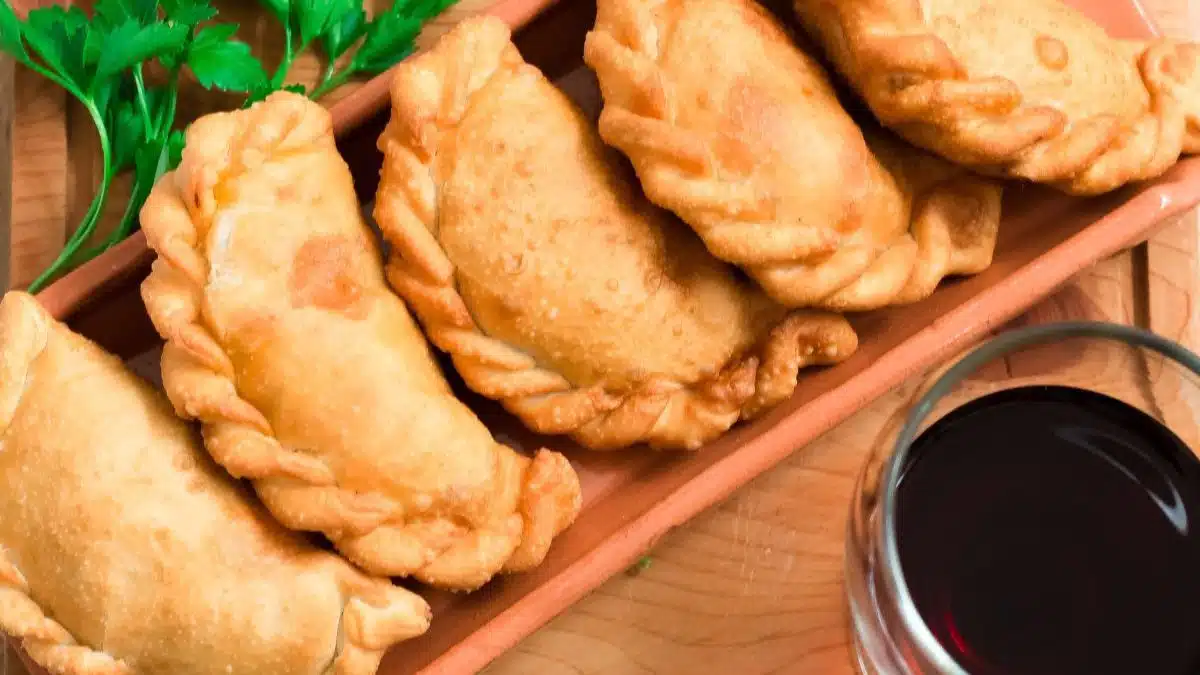
💭 Angela's Pro Tips & Recipe Notes
- Trimming the Beef: Remove as much fat as possible from the beef before cubing it. Excess fat can render during baking and make the pasties soggy.
- Dough Management: Keep your leftover dough handy. If the filling punctures the dough during sealing, use the leftover dough to patch up any holes.
- Handling Dough Circles: When cutting out dough circles, stack them with a light sprinkle of flour between each layer to prevent sticking.
- Filling Preparation: Use uncooked, finely diced beef for the filling. It will cook thoroughly in the oven as the pasties bake.
- Time-Saving Option: For convenience, store-bought pastry crust can be used, though it deviates from the traditional method of making pasties.
🥡 Storing & Reheating
Once cool, place the pasties in an airtight container and refrigerate them for up to 4 days. You can also wrap them in plastic wrap, place them in a heavy-duty freezer bag, and freeze them for up to 4 months.
Reheating
Thaw frozen pasties in the refrigerator overnight before reheating. Place pasties on a baking sheet uncovered and bake at 350°F (175°C) for 30 minutes, or until hot all the way through
>>>>See all of my recipes here<<<<
❓ Recipe FAQs
The general consensus is that Cornish Pasties are best hot right out of the oven, but it isn't uncommon for people to enjoy them cold. In fact, Cornish tin miners used to pack pasties in their lunch sacks and enjoy them cold or at room temperature on their work break! A true Cornish pasty is rich and flavorful enough to be satisfying either way.
Definitely! To freeze your pasties, wrap them tightly in plastic wrap before placing them in a heavy-duty freezer bag. They will keep well frozen for up to 4 months! When you are ready, just transfer the pasties to the fridge to defrost before reheating them in the oven (my recommended method) or microwave.
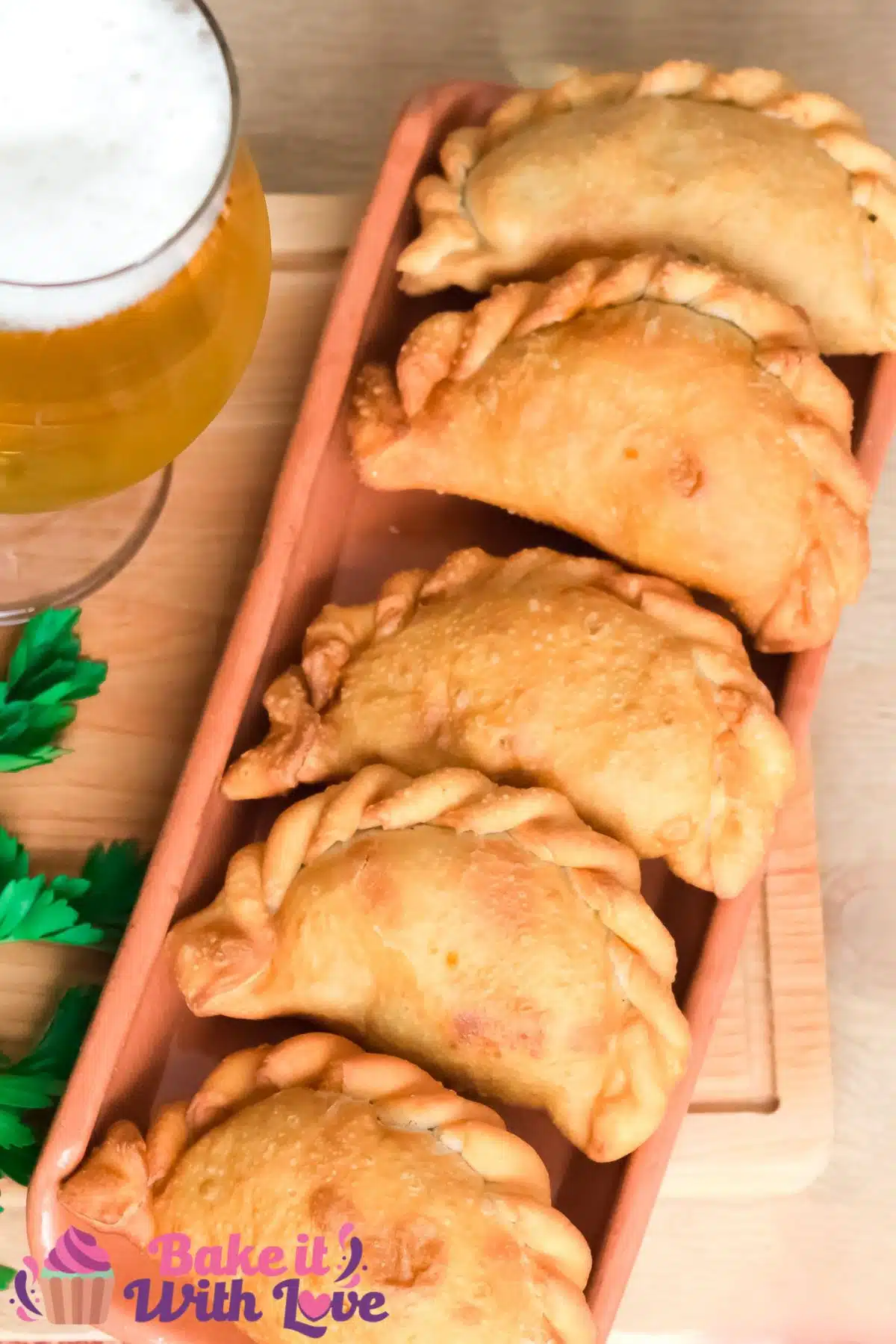
😋 Recipes From Across The Pond
- Yorkshire Puddings - These rich egg-based dinner rolls are a staple in the UK!
- British Christmas Pudding - An ultra-moist holiday cake loaded with dried fruits and sweet spices!
- Irish Lamb Stew - Buttery chunks of lamb meat and tender root vegetables in a rich and savory broth!
- Shepherd's Pie - With this classic recipe, you'll be making shepherd's pie like Gordon Ramsay in no time!
- Corned Beef and Cabbage - The secret to making the best-corned beef and cabbage is to slow roast it with Guinness!
- Leftover Lamb Lancashire Hotpot - A rich and savory lamb and potatoes dish originating in Lancashire, England (it's perfect for using up leftovers)!
Do you love a recipe you tried? Please leave a 5-star 🌟rating in the recipe card below and/or a review in the comments section further down the page.
Stay in touch with me through social media @ Pinterest, Facebook, Instagram, or Twitter! Subscribe to the newsletter today (no spam, I promise)! Don't forget to tag me when you try one of my recipes!
📖 Recipe Card
Cornish Pasties
Ingredients
Pastry
- 3 ½ cup all-purpose flour (plus more for rolling out the dough)
- 2 tsp baking powder
- 1 teaspoon salt
- ½ cup unsalted butter (cold, cut into small cubes)
- 2 egg yolks
- ½ cup cold water
- 1 egg white (beaten, for brushing onto the assembled pasties)
Filling
- 1 lb potatoes (peeled and finely diced)
- ⅓ lb rutabaga (peeled and finely diced)
- ⅓ lb yellow onion (finely diced)
- 1 lb skirt steak (or sirloin steak, uncooked and cut into small cubes)
- 1 teaspoon salt
- 1 teaspoon ground black pepper
(Note: 2x or 3x only changes the ingredient list)
Instructions
Make The Pastry Dough
- Add the flour, baking powder, and salt to a food processor or blender and quickly blend to combine. Add the butter and blend just until the mixture begins to look like coarse breadcrumbs.
- Add the egg yolks and pulse a few times to combine. Then, add the water in small amounts (you might not need it all), and pulse the food processor between each addition until the dough begins to form a ball.
- Remove the pastry dough from your food processor and wrap it tightly in plastic wrap. Place it in the fridge to chill for 3 hours.
Roll Out The Dough
- When it's almost time to pull the dough from the fridge, preheat your oven to 350°F (175°C). Pull out 2 large baking sheets and sprinkle flour over them, set aside.
- Grab your dough from the fridge and flour a flat surface to roll it on. Shape the ball of dough into a log and slice it into 6 evenly-sized pieces.
- Roll each chunk of dough into a round shape that is roughly 8 inches in diameter (you can use an 8-inch dinner plate as a guide if needed) and set aside.
Make The Pasties
- In a large mixing bowl, add the potatoes, rutabaga, onion, uncooked beef, salt, and pepper. Mix until everything is thoroughly combined.
- Lay out a circle of dough on your floured work surface and add a heaping handful of the filling mix to the center. You want to leave a ¾-inch space around the edges of the dough.
- Wet your fingers and lightly moisten the edges of the dough. Fold the bottom half of the dough upwards to meet the opposite edge. Use your fingers to crimp the dough closed, starting in the center and working outwards.
- Repeat with the remaining pasties and place them onto the prepared baking sheets. Use a sharp knife to slice a small slit in the top of each pasty so steam can escape.
- Brush the pasties with the beaten egg white and place them in the oven to bake for 40-50 minutes, or until nicely golden brown.
- Remove from the oven and let cool for 5-10 minutes before eating because the inside will be very hot!
Notes
- Try to remove as much fat from the beef as possible before cubing it or it can make your pasties soggy when it renders in the oven.
- Save your leftover dough! If the filling punctures the dough while you are sealing your pasties, you can use leftover dough to patch the hole.
- When cutting the circles from the dough, you can stack them by putting a sprinkle of flour between each layer.
- You want to use uncooked beef for your pasty filling. Don't worry, since it is finely diced it will cook in the oven while your pasties bake!
- To save time, you can certainly use storebought pastry crust instead of making your own, though this is not traditional.
- To store: Once cool, place the pasties in an airtight container and refrigerate them for up to 4 days. You can also wrap them in plastic wrap, place them in a heavy-duty freezer bag, and freeze them for up to 4 months.
- To reheat: Thaw frozen pasties in the refrigerator overnight before reheating. Place pasties on a baking sheet uncovered and bake at 350°F (175°C) for 30 minutes, or until hot all the way through.

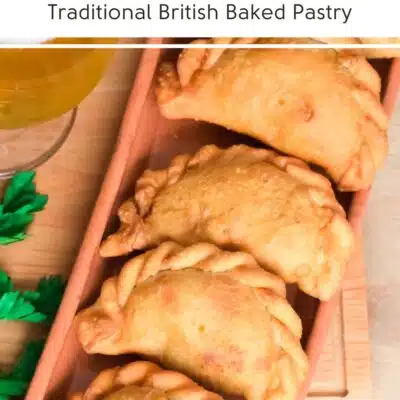
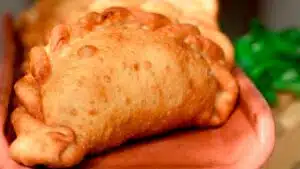
Lori says
I'd like to know how you make that braid around the pasty.
Angela Latimer says
That was simply rolling the edges and tucking them under to make that braid to seal the pasties. I'll take process photos to include as soon as I update the post (which is coming soon).
Jaap smook says
heb het recept van mijn grootmoeder woonde in st austell.
mijn moeder kwam op haar 7de in holland met het recept.
en heeft het aan mij doorgegeven. ik verwen er anderen nog dagelijks mee.
als ik in de familie xeg we eten cornishastie.
feest
"got the recipe from my grandmother lived in st austell.
my mother came to holland when she was 7 with the recipe.
and passed it on to me. I still spoil others with it every day.
when i in the xeg family we eat cornishastie.
party"
, Shirley Matthes says
My Cornish grandmother, Jessie Gilbert Frye used to make these, using beef or the Lancashire version with lamb. So delicious and filling.
Carl says
Turned out perfect, I love British food!